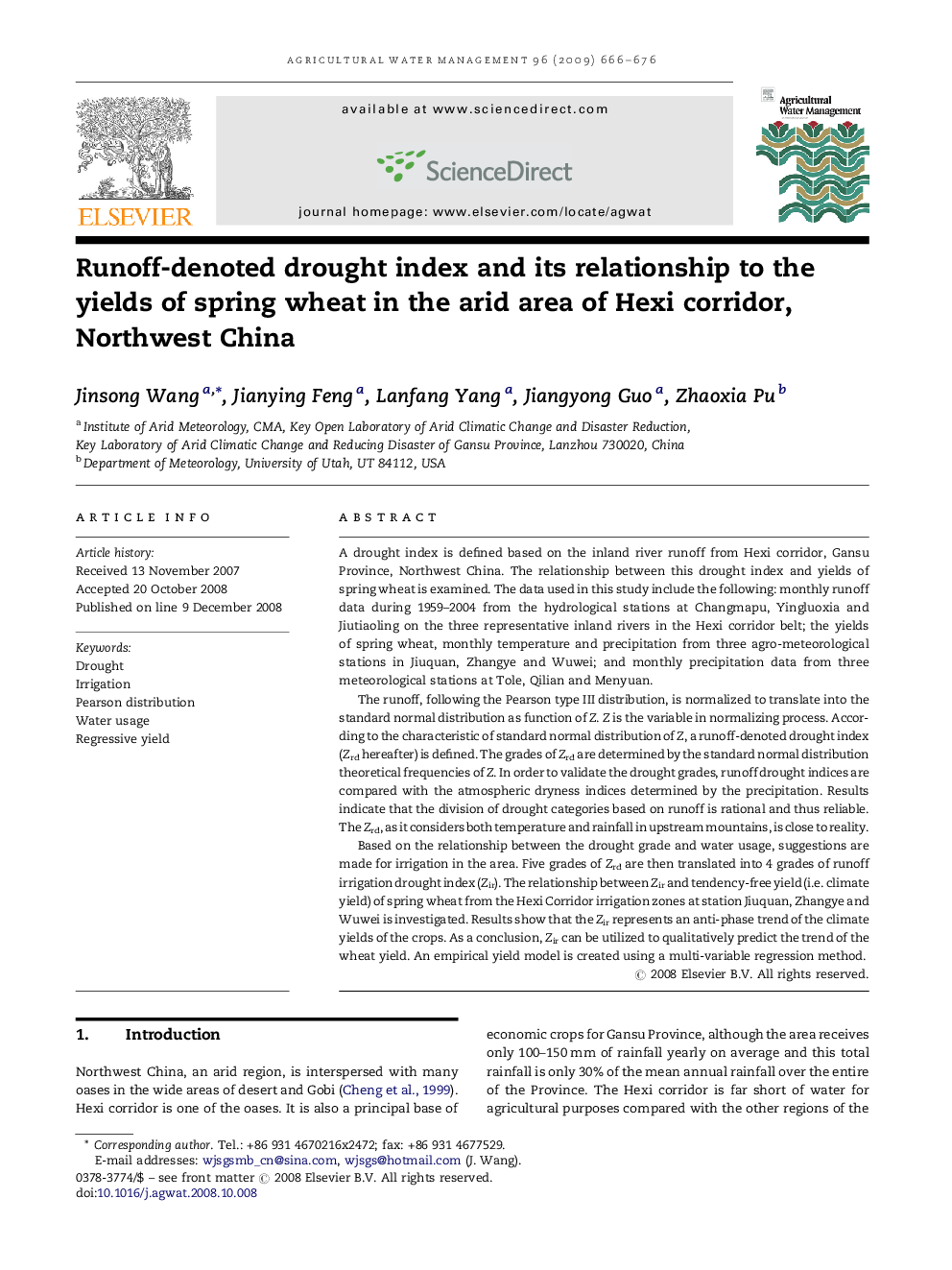| Article ID | Journal | Published Year | Pages | File Type |
|---|---|---|---|---|
| 4480255 | Agricultural Water Management | 2009 | 11 Pages |
A drought index is defined based on the inland river runoff from Hexi corridor, Gansu Province, Northwest China. The relationship between this drought index and yields of spring wheat is examined. The data used in this study include the following: monthly runoff data during 1959–2004 from the hydrological stations at Changmapu, Yingluoxia and Jiutiaoling on the three representative inland rivers in the Hexi corridor belt; the yields of spring wheat, monthly temperature and precipitation from three agro-meteorological stations in Jiuquan, Zhangye and Wuwei; and monthly precipitation data from three meteorological stations at Tole, Qilian and Menyuan.The runoff, following the Pearson type III distribution, is normalized to translate into the standard normal distribution as function of Z. Z is the variable in normalizing process. According to the characteristic of standard normal distribution of Z, a runoff-denoted drought index (Zrd hereafter) is defined. The grades of Zrd are determined by the standard normal distribution theoretical frequencies of Z. In order to validate the drought grades, runoff drought indices are compared with the atmospheric dryness indices determined by the precipitation. Results indicate that the division of drought categories based on runoff is rational and thus reliable. The Zrd, as it considers both temperature and rainfall in upstream mountains, is close to reality.Based on the relationship between the drought grade and water usage, suggestions are made for irrigation in the area. Five grades of Zrd are then translated into 4 grades of runoff irrigation drought index (Zir). The relationship between Zir and tendency-free yield (i.e. climate yield) of spring wheat from the Hexi Corridor irrigation zones at station Jiuquan, Zhangye and Wuwei is investigated. Results show that the Zir represents an anti-phase trend of the climate yields of the crops. As a conclusion, Zir can be utilized to qualitatively predict the trend of the wheat yield. An empirical yield model is created using a multi-variable regression method.
